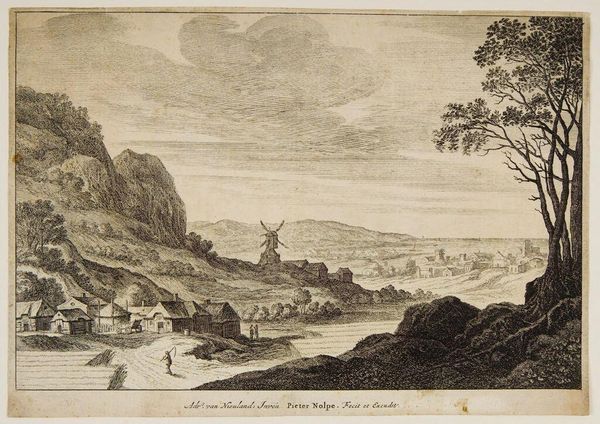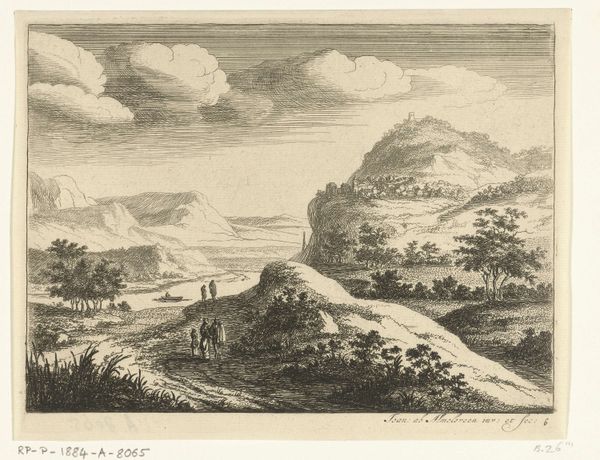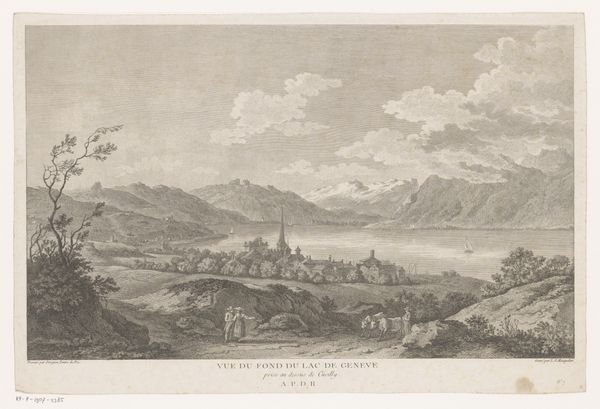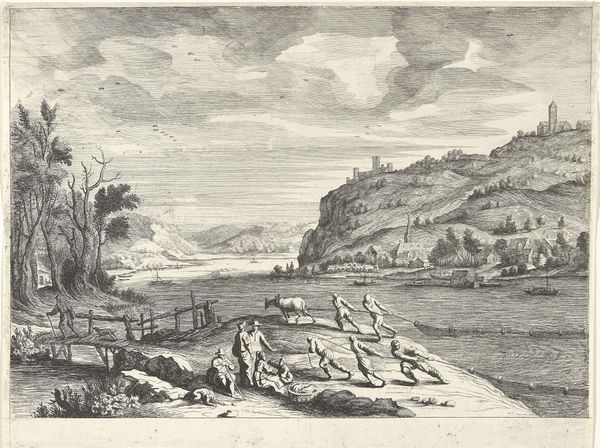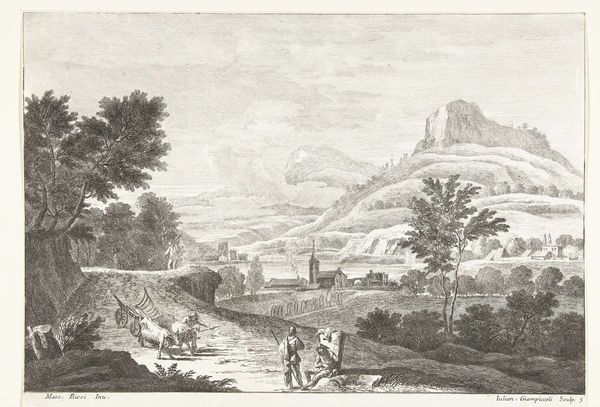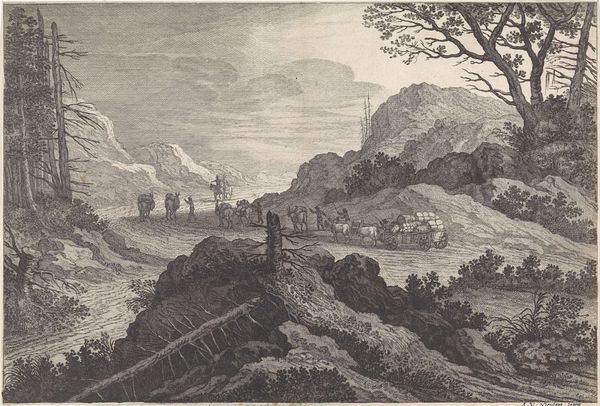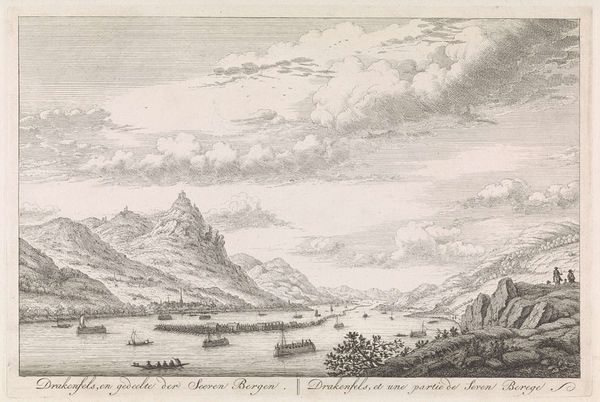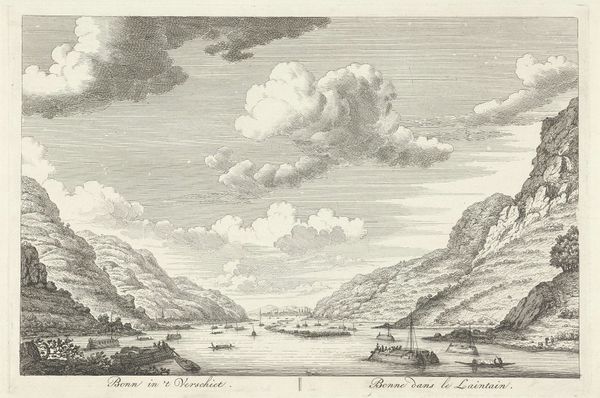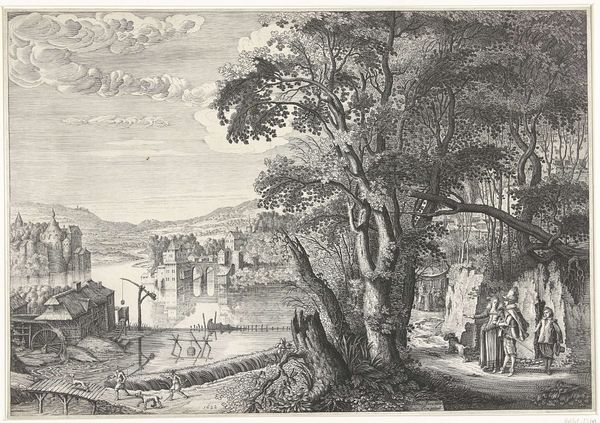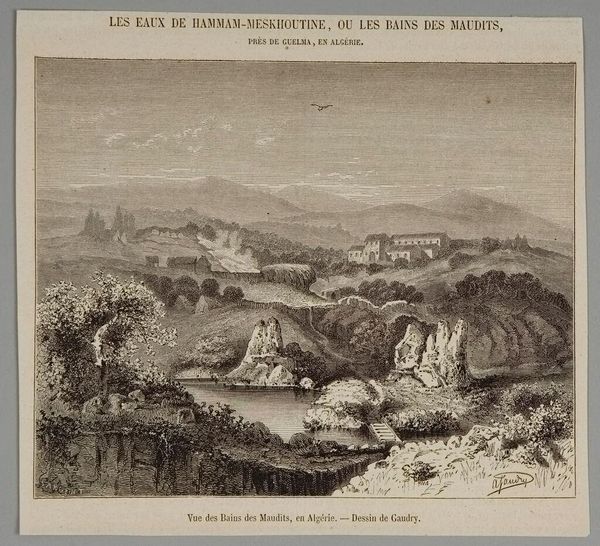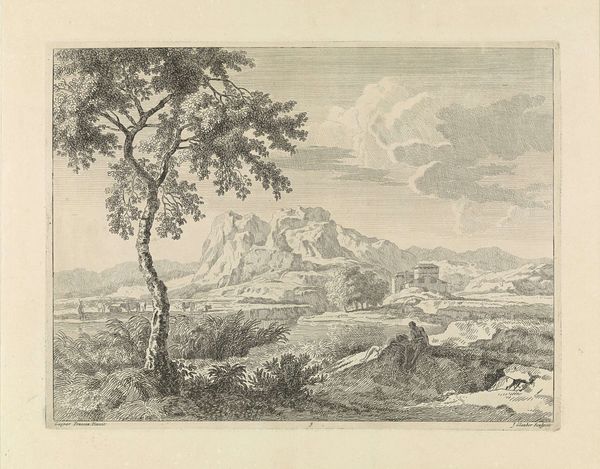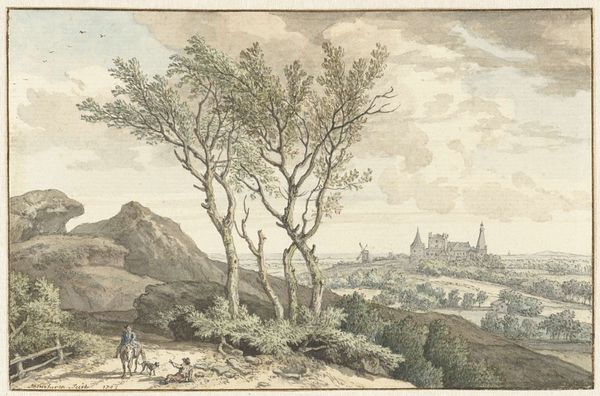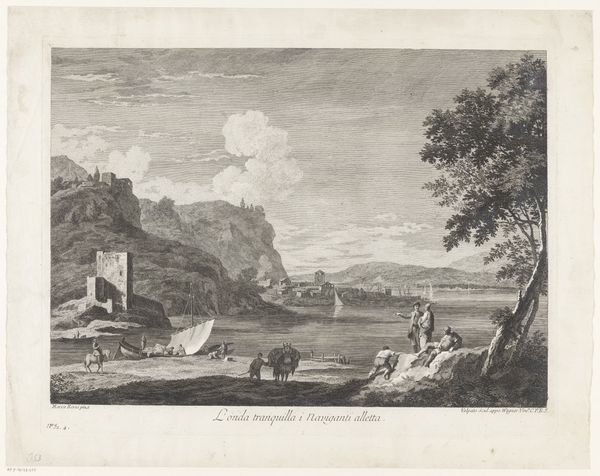
print, etching, engraving
#
dutch-golden-age
# print
#
etching
#
old engraving style
#
landscape
#
genre-painting
#
engraving
#
realism
Dimensions: height 230 mm, width 319 mm
Copyright: Rijks Museum: Open Domain
Curator: This is Pieter Nolpe’s “Coastal Landscape with a Mill,” an engraving and etching, placing it sometime between 1688 and 1727. Editor: It’s a surprisingly still scene, considering all that activity. The tiny figures working, the suggestion of the city beyond… and the massive weight of that rock face to the left balancing out the composition. Curator: Considering it's from the Dutch Golden Age, we see a clear focus on the material conditions and the socioeconomic forces at play. Nolpe wasn't just depicting a pretty scene. He was documenting the sources of power and the sites of production. Look at the mill, not just as a picturesque detail, but as a piece of industrial machinery reliant on wind power to provide the economic activity of the community. Editor: Yes, and the people depicted, rendered as so small, they nevertheless signify so much of that period. How labor powered daily life, or perhaps was at its mercy too. We see a stark reminder of the reliance on environment. The towering rock could represent how land dictates our activities. Curator: Absolutely. The artist clearly chose the medium carefully, using both engraving and etching to produce contrasting textures that mimic the visual experience of landscape, but that requires the technical labor of working directly with the material. Each line carefully placed represents a physical engagement with metal and acid. Editor: It’s the etching and engraving together, creating depth that draws us in—the light in contrast with darker values around it suggests Dutch fascination with nature’s details. I also consider where people are situated, how they occupy landscape which historically was often exclusive depending on status. Was Nolpe’s distribution intentionally attempting representation in these outdoor settings? Curator: Possibly, especially when factoring in how genre paintings depicting daily life of commoners democratized ownership by entering households of those typically excluded by more traditionally noble art themes. We have to consider who commissioned, who purchased these images of windmills, and for what purpose—did it become visual reminders that connected these scenes to progress? Editor: Perhaps—food for thought on how a simple-seeming landscape carries multiple narratives regarding people and material. Nolpe presents both within careful lines and composition. Curator: Agreed. A compelling reminder to look closely at what lies beneath the surface. Editor: Precisely. An exercise in mindful looking as active remembering.
Comments
No comments
Be the first to comment and join the conversation on the ultimate creative platform.
